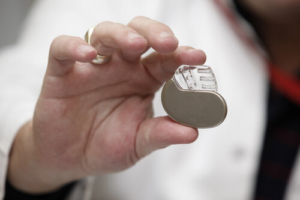Embarking on ablation for AFib raises key questions about its effectiveness. Ablation for AFib success rate can vary: paroxysmal AFib treatments show initial success in 60-80% of reported cases, while persistent AFib has lower rates. However, these numbers don’t tell the full story. Future interventions and the duration of AFib impact these rates, topics we’ll explore in depth to help you understand what determines ablation success.
Key Takeaways
- Catheter ablation for atrial fibrillation has variable success rates influenced by AF type, ablation technique, and patient characteristics, with single-procedure success rates generally higher for paroxysmal AF than for persistent AF.
- Clinical trials highlight catheter ablation’s benefits, including improving quality of life and clinical outcomes in AF and heart failure patients, with ablation being more effective than anti-arrhythmic drugs as a first-line management for preventing AF recurrences and reducing AFib symptoms.
- Long-term success of AF ablation requires regular monitoring and continued follow-up, with some patients requiring repeat procedures to maintain rhythm control.
Factors Affecting Catheter Ablation Success Rates
Catheter ablation, also known as atrial fibrillation ablation or radiofrequency catheter ablation, is a medical procedure used to treat conditions such as atrial fibrillation (AF). The success rates of catheter ablation treatment, can vary widely, and they are influenced by several factors, including the type of AF, the ablation techniques used, the duration of AFib, and the specific characteristics of the patient.
Paroxysmal vs. Persistent AF Ablation Success Rates
The success rates for catheter ablation, specifically in the ablation of atrial fibrillation, can be influenced by the type of atrial fibrillation. Two common types of AF are paroxysmal atrial fibrillation and persistent atrial fibrillation. Paroxysmal AF is characterized by episodes that terminate spontaneously within seven days. Persistent atrial fibrillation is when the episodes last for more than seven days, up to 1 year in duration. Long standing persistent atrial fibrillation, sometimes called chronic atrial fibrillation, is continuous atrial fibrillation that has been present for over 1 year.
Research has shown that catheter ablation success rates, including circumferential pulmonary vein isolation ablation, are generally higher for PAF when compared to persistent AF. The efficacy of a single procedure is also superior for PAF. Published data in the literature suggest that success rates following ablation of AF are relatively favorable (60-80%) depending on the study. Most studies on effectiveness for an ablation procedure only have follow up data for up to one year. One study looked at the long-term success rate for paroxysmal AF catheter ablation following a single procedure was 68.6% at one year, 61.1% at three years, and 62.3% at five years.
On the other hand, the overall success rate of catheter ablation following a single procedure in individuals with persistent AF is significantly lower, with several studies listing a success rate of less then 50% with a single ablation procedure.
However, patients with persistent and long-standing persistent AF often see more positive results after undergoing multiple ablation procedures.
Ablation Techniques
The type of ablation technique used can also influence the success rate of the procedure. Two commonly used techniques include radiofrequency ablation and cryoballoon ablation. Radiofrequency ablation uses heat generated by radio waves to destroy targeted heart tissue causing the AF, while cryoballoon ablation uses freezing temperatures to achieve the same goal.
Few studies that have compared the two technique types have found similar efficacy between radiofrequency and cryoballoon ablation procedures.
Pulse Field Ablation (PFA) is an emerging technique in the field of atrial fibrillation ablation. This innovative method employs the use of electric fields to create controlled lesions for the treatment of AFib. Unlike traditional techniques, PFA is tissue-selective, meaning it targets only the heart tissue, leaving non-cardiac tissue unharmed. This potential advantage could lead to fewer complications and a safer procedure.
However, it’s important to note that data on the efficacy and long-term outcomes of PFA is still limited. Ongoing research and clinical trials are required to fully establish its success rates and potential benefits over conventional ablation techniques.
Surgical Ablation Procedures for AFib
While catheter ablation is a common procedure for treating AFib, surgical ablation procedures, such as the Mini Maze procedure, are also available. These more invasive procedures are typically considered for patients who have not responded to medications or catheter ablation, or in conjunction with other heart surgery.
Mini Maze Procedure
The Mini Maze procedure is a type of surgical ablation that aims to stop abnormal electrical signals in the heart. The surgeon makes small incisions in the chest, through which they insert a camera and surgical instruments. The surgeon then creates a pattern of scar tissue in the left atrium, which interrupts the erratic electrical signals causing AFib.
Success Rates and Risks of Surgical Ablation
The reported success rates for the Mini Maze procedure are quite high. According to various studies, the success rate is around 80-90% in maintaining sinus rhythm one year after the surgery. However, the success rate can decrease over time, with a success rate of about 73% at five years post-surgery.
Despite the higher reported success rate, surgical ablation procedures like the Mini Maze procedure are a more invasive procedure, and carry increased risks compared to catheter ablation. These risks include complications from surgery such as bleeding, infection, and damage to the heart or lungs. There’s also a risk of stroke during the procedure, and some patients may require a pacemaker after the surgery.
As with any medical procedure, the risks and benefits of surgical ablation procedures should be discussed thoroughly with your healthcare team. These procedures are generally reserved for patients with symptomatic, drug-resistant AFib or patients who have not had success with catheter ablation.
Patient Characteristics
Patient characteristics significantly affect the outcome of catheter ablation for AF. Factors such as age, left atrial diameter, duration of AFib, and presence of comorbidities can significantly influence the outcome of the procedure.
While age does not seem to influence immediate post-procedure complications or the initial effectiveness of ablation, it does have a significant impact on long-term outcomes, particularly in patients over 70 years.
An elevated left atrial diameter is also a significant indicator of AF recurrence after catheter ablation, with each 1-ml increase in left atrial volume/size index associated with a 3% increased likelihood of AF recurrence.
Comorbidities such as obesity, hypertension, diabetes mellitus, and sleep apnea can also influence the success rate of catheter ablation, with morbid obesity being notably linked to decreased success rates.
These factors should be taken into consideration when evaluating the effectiveness of catheter ablation in different patient populations.
Clinical Trials on Ablation Success Rates
Clinical trials play a significant role in assessing the efficacy of medical procedures such as catheter ablation. Over the years, several clinical trials have consistently demonstrated the effectiveness of catheter ablation in preventing AF recurrence, improving the quality of life, and potentially improving clinical outcomes in patients with heart failure.
First-line Management
In terms of first-line management for AF, studies have shown that ablation is significantly more effective than anti-arrhythmic drugs in preventing AF recurrences. Several studies have shown that the sooner a patient undergoes a catheter ablation procedure for AFib, the better the success rate. Recent studies have emphasized that a time of diagnosis of AFib to ablation procedure of less then 12 months usually results in a better success rate.
However, bear in mind that radiofrequency ablation, despite its effectiveness, does have risks that need to be discussed with your doctor. These may include vascular complications like femoral bleeding, hematoma, pseudoaneurysm, and groin infection, as well as serious complications like cardiac tamponade, stroke, pulmonary vein stenosis, atrial esophageal fistula, and phrenic nerve paralysis.
Quality of Life Outcomes
Ablation has proven to enhance the quality of life of patients with AF, irrespective of its immediate effect on the arrhythmia. This is significant as the primary goals of AF treatment extend beyond managing the arrhythmia to enhancing the patients’ overall well-being.
Studies have shown that the improvements in quality of life for individuals who undergo catheter ablation for paroxysmal AF may last for up to three years. This underscores the importance of not just treating AF, but also maintaining a high quality of life for patients.
Heart Failure and Atrial Fibrillation
Patients with heart failure represent a specific group of patients where the benefits of ablation have been shown to be substantial. The CASTLE-AF trial found that the ablation group showed a significant decrease in the composite endpoint of death or hospitalization for worsening heart failure, along with an improvement in left ventricular ejection fraction.
These results indicate that ablation could enhance clinical outcomes for this group of patients. The restoration of sinus rhythm with a low AF burden was found to be correlated with a significant improvement in LVEF at six months of follow-up, and a significant reduction in hospitalizations for AFib or heart failure, underscoring the importance of maintaining normal heart rhythm in this population.
Monitoring and Follow-up after Ablation
Adequate monitoring and follow-up after ablation are imperative for gauging the procedure’s success and identifying recurrences. It is suggested that patients undergo follow-up evaluations every six months for a duration of at least two years.
Blanking Period
The term “blanking period” refers to a specific timeframe, usually 90 days or 3 months, during which early arrhythmia recurrences are attributed to a stabilization process rather than the original arrhythmia mechanism. This period allows for a time of post-procedural stabilization, during which the reappearance of arrhythmias is viewed as nonspecific.
A three-month blanking period following the procedure is typically recommended and usually observed during clinical trials, with emerging evidence suggesting that notable electroanatomic alterations in the left atrium are confined to the initial four to eight weeks post-ablation. During this period, early recurrences of an atrial tachyarrhythmia, which are mainly nonspecific and transient, are sometimes observed.
Long-term Follow-up
Long-term follow-up after catheter ablation is vital given the decreasing success rates of AF ablation over time, with a noticeable decrease after the first year post-procedure.
Follow-up protocols include standard ECGs at scheduled visits for at least two years post-procedure. Specifically, patients should have typically follow-up three months after the ablation and then every six months for a minimum of two years.
Monitoring for AFib Recurrence After Ablation
Monitoring for AFib recurrence after an ablation procedure is a crucial step in maintaining heart health. Patients frequently use at-home devices such as the KardiaMobile or Apple Watch, which allow for convenient and regular heart rhythm checks. These devices can detect irregular heart rhythms and alert the user to potential AFib episodes.
Additionally, medical-grade devices like an implantable cardiac monitor provide a more comprehensive and accurate method of monitoring after ablation. These devices are implanted under the skin and continuously monitor heart rhythms, transmitting data directly to the patient’s healthcare provider. This allows for immediate detection and intervention in case of recurrence, ensuring optimal patient care.
Recurrence and Repeat Procedures
Even with successful catheter ablation, recurrences may occur. The observed recurrence rate of AF following catheter ablation is reported in 20 to 40% of patients, with late arrhythmia recurrence after pulmonary vein isolation (PVI) occurring at a rate of up to 30% based on limited long-term follow-up studies.
It is common for patients to undergo repeat procedures following catheter ablation for AF, and the success rates for these subsequent interventions typically increases the success rates of the ablation for AFib.
The efficacy rate of subsequent interventions for recurrent AF after catheter ablation is 73.9% when additional procedures are performed, emphasizing the importance of monitoring and follow-up.
Tips for Maximizing Ablation Success
While the success of catheter ablation can depend on various factors, there are certain things that patients can do to improve their chances of a successful ablation. These include managing risk factors, choosing an experienced ablation center, and making post-ablation lifestyle changes.
Risk Factor Management
Managing risk factors such as hypertension and hyperlipidemia can certainly improve ablation outcomes. The success of catheter ablation can be negatively impacted by hypertension, which affects the left atrial substrate properties. However, implementing management strategies such as lifestyle changes and medications can help in controlling hypertension, thereby minimizing its negative impact on the outcome of AF ablation.
Hyperlipidemia, characterized by elevated levels of triglycerides, total cholesterol, and low-density lipoprotein cholesterol, has been observed to have a negative correlation with the recurrence of AF following catheter ablation.
Weight Loss and Ablation Success
Weight loss following an ablation procedure can significantly improve the success rate of the procedure. Obesity is a known risk factor for atrial fibrillation and can negatively impact the outcomes of ablation. By losing weight, patients can reduce the pressure on their heart, thereby improving the effectiveness of the ablation. Moreover, weight loss can lead to a decrease in the size of the left atrium, a factor that has been associated with higher recurrence rates of atrial fibrillation post-ablation. Therefore, adopting a healthy diet and regular exercise regimen post-ablation not only contributes to overall health but can also enhance the success rate of the ablation procedure.
Sleep Apnea Treatment and Ablation Success
Treating sleep apnea, particularly with Continuous Positive Airway Pressure (CPAP) therapy, can also enhance the success rate of catheter ablation. Sleep apnea, a common comorbidity in AF patients, has been associated with a higher recurrence rate of AF post-ablation. However, studies have shown that effective management of sleep apnea with CPAP therapy can significantly improve the outcomes of ablation. By ensuring a continuous flow of air, CPAP prevents airway collapse, thus reducing apnea episodes and improving overall heart health. This not only enhances the quality of life for patients but also contributes to a higher success rate of the ablation procedure.
Alcohol Reduction and Ablation Success
Reducing or completely ceasing alcohol consumption can significantly improve the success rate of catheter ablation for AF. Alcohol has been associated with an increased risk of atrial fibrillation, and heavy drinking can lead to changes in the structure and electrical stability of the heart, potentially undermining the effectiveness of ablation procedures. By reducing or eliminating alcohol intake, patients can mitigate these risks and enhance the likelihood of a successful ablation. It’s worth noting that even moderate alcohol consumption can increase AF recurrence, so a commitment to minimal or zero alcohol is advisable for optimal ablation outcomes.
A Step-by-Step Plan to Improve AFib Ablation Success Rate
The Take Control Over AFib program offers a comprehensive, step-by-step plan for lifestyle modifications designed to enhance the success rate of an AFib ablation procedure. This program emphasizes the importance of a holistic approach to managing AFib, integrating dietary changes, regular exercise, stress management, and sleep hygiene into the treatment plan. By adopting healthier habits, patients can not only improve their overall well-being but also create an optimal environment for the success of the ablation procedure. The program provides guidance and support throughout the process, empowering patients to take an active role in managing their AFib and improving their health outcomes.
Learn more about the Take Control Over AFib Program here.
Choosing an Experienced Ablation Center
Choosing a reputable ablation center for catheter ablation is important as it directly affects the procedure’s safety and efficacy. These centers are equipped with cardiac specialists who have specialized training in treating rhythm disorders (called electrophysiologists) and are skilled at reducing potential complications. In general, the more experienced a physician or center is at these procedures, the better the success rate for the ablation procedure, and the lower the risk for complications.
Summary
Catheter ablation is a common treatment for AF, with numerous factors influencing its success rate. These include the type of AF, the ablation technique used, and the patient’s characteristics. Clinical trials have consistently shown the effectiveness of catheter ablation in preventing AF recurrence, improving the quality of life, and potentially improving clinical outcomes in patients with heart failure.
However, proper monitoring and follow-up are crucial for determining the success of the procedure and detecting recurrences. Furthermore, patients can improve their chances of a successful ablation by managing risk factors, choosing an experienced ablation center, and making lifestyle changes post-ablation.
Frequently Asked Questions
What is the long term success rate for AFib ablation?
The reported long-term success rate for paroxysmal AF catheter ablation following a single procedure was 68.6% at one year, 61.1% at three years, and 62.3% at five years. The long term success rate for persistent atrial fibrillation is usually much lower.
Is ablation for AFib worth it?
The effectiveness of ablation for AFib depends on the duration and persistence of the condition, as well as any other structural problems with the heart. While it can improve symptoms and quality of life for some, it may not work for everyone, and repeat procedures could be considered for a higher chance of success.
Can ablation stop AFib permanently?
Ablation may not permanently eliminate atrial fibrillation and the condition can come back after the procedure or several months later. Therefore, it may not be able to stop AFib permanently. However, ablation frequently improves AFib symptoms and can lead to a reduction in medications.
What is the downside of ablation?
The downside of ablation includes risks such as bleeding, infection, and pain from the catheter insertion, with a rare risk of death. Other potential risks involve blood vessel damage and heart valve damage.
What factors can influence the success rates of catheter ablation for AF?
Several factors can influence the success rates of catheter ablation for atrial fibrillation, including the type of AF, ablation technique used, and patient characteristics like age and comorbidities, as well as duration of atrial fibrillation.
The Best Atrial Fibrillation Book
Your Complete Guide To AFib: The Essential Manual For Every Patient With Atrial Fibrillation
$15.95 (as of April 26, 2024 10:31 GMT -06:00 - More infoProduct prices and availability are accurate as of the date/time indicated and are subject to change. Any price and availability information displayed on [relevant Amazon Site(s), as applicable] at the time of purchase will apply to the purchase of this product.) The A to Z guide on everything you need to know about atrial fibrillation. Written by AFib expert Dr. Percy Morales MD. Over 120 pages of essential information on medications, procedures, and lifestyles modifications for AFib. Easy to read for every patient.
Shop AFib Products on Amazon
KardiaMobile 6-Lead Personal EKG Monitor – Six Views of The Heart – Detects AFib and Irregular Arrhythmias – Instant Results in 30 Seconds – Works with Most Smartphones - FSA/HSA Eligible

KardiaMobile 1-Lead Personal EKG Monitor – Record EKGs at Home – Detects AFib and Irregular Arrhythmias – Instant Results in 30 Seconds – Easy to Use – Works with Most Smartphones - FSA/HSA Eligible

Apple Watch Series 9 [GPS 41mm] Smartwatch with Storm Blue Aluminum Case with Silver Sport Band M/L. Fitness Tracker, Blood Oxygen & ECG Apps, Always-On Retina Display

Fitbit Sense 2 Advanced Health and Fitness Smartwatch with Tools to Manage Stress and Sleep, ECG App, SpO2, 24/7 Heart Rate and GPS, Shadow Grey/Graphite, One Size (S & L Bands Included)

OMRON - Complete Wireless Upper Arm Blood Pressure Monitor + EKG - Built-in Bluetooth Technology

Omron Hem 7361T Bluetooth Digital Blood Pressure Monitor with Afib Indicator and 360° Accuracy Intelliwrap Cuff for Most Accurate Measurements (White)

EMAY Portable ECG Monitor | Record ECG and Heart Rate Anytime Anywhere | Stand-Alone Device with LCD Screen and Storage | No Subscription Required

Samsung Galaxy Watch 6 44mm Smartwatch with HR Zones, Sleep Coaching, Heart Monitor - Graphite

Natural Rhythm Triple Calm Magnesium 150 mg - 120 Capsules – Magnesium Complex Compound Supplement with Magnesium Glycinate, Malate, and Taurate. Calming Blend for Promoting Rest and Relaxation.

Pure Encapsulations Magnesium (Glycinate) - Supplement to Support Stress Relief, Sleep, Heart Health, Nerves, Muscles, and Metabolism* - with Magnesium Glycinate - 180 Capsules






















![Apple Watch Series 9 [GPS 41mm] Smartwatch with Storm Blue Aluminum Case with Silver Sport Band M/L. Fitness Tracker, Blood Oxygen & ECG Apps, Always-On Retina Display #1](https://m.media-amazon.com/images/I/311xwtp4mFL._SL100_.jpg)
![Apple Watch Series 9 [GPS 41mm] Smartwatch with Storm Blue Aluminum Case with Silver Sport Band M/L. Fitness Tracker, Blood Oxygen & ECG Apps, Always-On Retina Display #2](https://m.media-amazon.com/images/I/41j+8AaUGsL._SL100_.jpg)
![Apple Watch Series 9 [GPS 41mm] Smartwatch with Storm Blue Aluminum Case with Silver Sport Band M/L. Fitness Tracker, Blood Oxygen & ECG Apps, Always-On Retina Display #3](https://m.media-amazon.com/images/I/41jIyxZitnL._SL100_.jpg)
![Apple Watch Series 9 [GPS 41mm] Smartwatch with Storm Blue Aluminum Case with Silver Sport Band M/L. Fitness Tracker, Blood Oxygen & ECG Apps, Always-On Retina Display #4](https://m.media-amazon.com/images/I/41IpNJERjCL._SL100_.jpg)
![Apple Watch Series 9 [GPS 41mm] Smartwatch with Storm Blue Aluminum Case with Silver Sport Band M/L. Fitness Tracker, Blood Oxygen & ECG Apps, Always-On Retina Display #5](https://m.media-amazon.com/images/I/31o17yhfYpL._SL100_.jpg)

















































